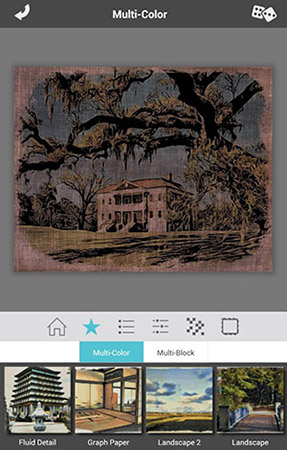

Andrew Stevens, “The Spread of Style: Americans and the Color Woodcut of the Early Twentieth Century” In Color Woodcut International: Japan, Britain, and America in the Early Twentieth Century (Madison : Chazen Museum of Art, University of Wisconsin-Madison, 2006): 49.Choosing which papers to start with can be a frustrating task for artists just beginning to learn mokuhanga. John Carter and Nicolas Barker, ABC for Book Collectors (New Castle, DE: Oak Knoll Press, The British Library, 2006): 231-232. “Introduction,” in Color Woodcut International: Japan, Britain, and America in the Early Twentieth Century (Madison : Chazen Museum of Art, University of Wisconsin-Madison, 2006): 10. To see the texture of printing on kozo (mulberry) paper in more detail and corresponding plates showing the shape of each color block, make an appointment with Special Collections in the John Peace Library Reading Room to request The Process of Color-Block Printing = Mokuhanga Junjozuri.įor more information on Japanese block prints in general, consider checking out one of several books on the topic from the Libraries’ stacks, such as Awash in Color: French and Japanese Prints (2012), Japanese Woodblock Prints: Artists, Publishers, and Masterworks 1680-1900 (2010), or Color Woodcut International: Japan, Britain, and America in the Early 20th Century(2006).
#Moku hanga blocks series
In the series of images below, you can see the rich tone and shading of the finished product slowly come into being as printing begins with the finely-carved outline block (in this case in black) and is followed by each additional color. The Process of Color-Block Printing = Mokuhanga Junjozuri (1949) by Shōzaburō Watanabe illustrates the process of color block printing step-by-step. These raised notches can then be inked and printed onto subsequent blocks, which are then carved with identically-placed notches. The first block is carved with two raised notches to indicate paper placement. Japanese print makers developed a highly effective registering technique called the kentō method.

Printing wood cuts in color requires a separate block for each color or shade and in order to achieve the desired effect, the paper and block must be perfectly aligned each time. Both methods, however, are printed in relief – that is, the un-carved portions are the highest points of the block, and thus produce the printed image. Despite distinct differences, the terms are sometimes used interchangeably, causing much confusion. There are two basic methods of printing with wood to make a wood cut, the artisan cuts with a knife along a plank of wood, while for a wood engraving, he or she uses a burin on the end grain.

While a print involving five or six colors was considered impressive in Europe, Japanese prints of the latter half of the 19th century frequently involved as many as a dozen colors. Chromoxylography, or color wood block printing, developed to particular heights of artistry and craftsmanship in China and Japan during the 17th – 19th centuries. Printing is most often thought of as a black and white art, but there is a long history of the use of color in printmaking in both East and West. The Process of Color-Block Printing = Mokuhanga Junjozuri (1949) Shōzaburō Watanabe.


 0 kommentar(er)
0 kommentar(er)
